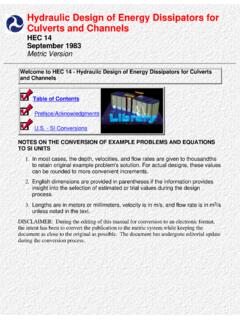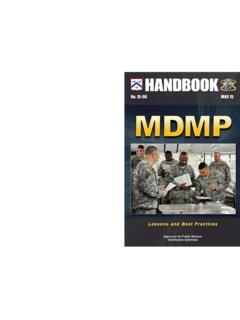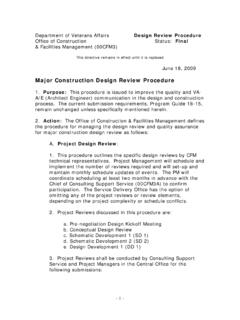Transcription of PCI Express* Board Design Guidelines
1 DRAFT *Other names and brands may be claimed as the property of others. PCI Express* Board Design Guidelines DRAFT Intel Corporation June 2003 PCI Express* Board Design Guidelines , DRAFT ii *Other names and brands may be claimed as the property of others. THIS document IS PROVIDED AS IS WITH NO WARRANTIES WHATSOEVER, INCLUDING ANY WARRANTY OF MERCHANTABILITY, NONINFRINGEMENT, FITNESS FOR ANY PARTICULAR PURPOSE, OR ANY WARRANTY OTHERWISE ARISING OUT OF ANY PROPOSAL, SPECIFICATION OR SAMPLE. No license, express or implied, by estoppel or otherwise, to any intellectual property rights is granted herein.
2 Intel disclaims all liability, including liability for infringement of any proprietary rights, relating to use of information in this specification. Intel, the Intel logo, and Pentium are trademarks or registered trademarks of Intel Corporation or its subsidiaries in the Untied States and other countries. Other names and brands may be claimed as the property of others. Copyright 2003, Intel Corporation. All rights reserved. This document is accessible on the Web at: The PCI Express Base Specification and PCI Express Electromechanical Specification can be found on PCI-SIG web site: PCI Express* Board Design Guide, DRAFT iii *Other names and brands may be claimed as the property of others. Contents 1. Physical Interconnect Layout Design .. 5 Introduction .. 5 Topology and Interconnect Overview .. 5 Card Interoperability .. 7 Bowtie Topology Considerations .. 7 Lane Polarity 8 Lane Reversal and Width Negotiation.
3 8 Physical Layout Design Constraints .. 11 PCB 11 Desktop System Board and Add-in Card (4-layer) Stackup .. 12 Server, Workstation and Mobile (6-layer, 8-layer and 10-layer) 15 Add-in Card and Mobile (6-layer) Stackup .. 16 PCB Trace and Other Element Considerations .. 17 Differential Pair Width and Spacing Impacts .. 20 Differential Pair Length Restrictions and Budgets .. 23 Length Matching .. 24 Reference Planes .. 25 Breakout Area Specific Routing Guidelines .. 27 Edge Finger Design : Add-in Card .. 29 Via Usage and Placement .. 30 Bends .. 32 Test Points and Probing .. 35 PCI Express Topologies .. 35 Interconnect Topologies for Two Components on the Baseboard .. 36 Interconnect Topologies for Baseboard with Add-in Card .. 37 Passive Components and Connectors .. 38 AC Coupling Capacitors .. 38 Connectors ..40 Summary .. 41 PCI Express* Board Design Guidelines , DRAFT iv *Other names and brands may be claimed as the property of others.
4 List of Figures Figure 1-1. Conceptual Example of a PCI Express Link .. 6 Figure 1-2. Polarity Inversion on a TX to RX Interconnect .. 8 Figure 1-3: Progressive Illustration of Lane/Polarity Reversal 10 Figure 1-4. Bowtie Routing to Alleviate Criss - crossing RX/TX Pairs .. 11 Figure 1-5. Example Stackup of 4-layer PCI Express Printed Circuit Board .. 12 Figure 1-6. Example of Soldermask Thickness Variations on Microstrip 13 Figure 1-7. Detailed Cross-sections of Microstrip 14 Figure 1-8. Example Stackup of 8-layer PCI Express Printed Circuit Board .. 15 Figure 1-9. Example Stackup of 10-layer PCI Express Printed Circuit Board .. 16 Figure 1-10. Reference Stackup for 6-layer Design .. 17 Figure 1-11. Top View of a PCB Illustrating Fiberglass Weave Patterns in the Dielectric .. 20 Figure 1-12. Trace Width and Spacing Recommendations for Microstrip .. 21 Figure 1-13. Trace Width and Spacing Recommendations for 22 Figure 1-14. Trace Width Variation 22 Figure 1-15.
5 Example of Symmetrical and Non-symmetrical Lateral 23 Figure 1-16. Examples of Etch Located Within a Pad .. 24 Figure 1-17. Example of a PCB Showing the Differential Pair on the Top Layer and a GND Island on the Second Layer (PWR Plane) with its Potential Stitching Vias .. 26 Figure 1-18. Package Pinout/Breakout 27 Figure 1-19. Breakout Area Traces ..28 Figure 1-20. Example Scenario of a Trace Routing Over an Anti-pad Void .. 29 Figure 1-21. Example of PCI Express Reference Plane Voids for a x4 PCI Express Edge Finger 30 Figure 1-22. Placing Vias as a Pair .. 31 Figure 1-23. Example Illustrations of Acceptable Bends vs. Tight Bends .. 32 Figure 1-24. Bend Illustration Diagram for Coupled Differential 33 Figure 1-25. Routing/Bend Diagram for Uncoupled Traces into Component 34 Figure 1-26. Bend Illustration Diagram for Uncoupled Section of a Differential 35 Figure 1-27. Baseboard Chip-to-chip Topology Example .. 36 Figure 1-28. Baseboard Chip-to-connector and Add-in Card Example.
6 37 Figure 1-29. Symmetrical Routing into AC Caps .. 39 List of Tables Table 1-1. Card Interoperability.. 7 Table 1-2. PCI Express Microstrip Trace Routing 18 Table 1-3. PCI Express Stripline Trace Routing 19 Table 1-4. Example Via Usage and Trace Length Tradeoffs .. 32 Table 1-5. Chip-to-chip Topology Segment 36 Table 1-6. Baseboard Chip-to-Connector and Add-in Card Segment Definitions .. 37 Table 1-7. AC Coupling Capacitor Guidelines .. 40 PCI Express* Board Design Guidelines , DRAFT 5 *Other names and brands may be claimed as the property of others. 1. Physical Interconnect Layout Design Introduction This document provides practical, common Guidelines for incorporating PCI Express interconnect layouts onto Printed Circuit Boards (PCB) ranging from 4-layer desktop baseboard designs to 10-layer or more server baseboard designs.
7 Guidelines and constraints in this document are intended for use on both baseboard and add-in card PCB designs. This includes interconnects between PCI Express devices located on the same baseboard (chip-to-chip routing) and interconnects between a PCI Express device located down on the baseboard and a device located up on an add-in card attached through a connector. This document is intended to cover all major components of the physical interconnect including Design Guidelines for the PCB traces, vias and AC coupling capacitors, as well as add-in card edge-finger and connector considerations. The intent of the Guidelines and examples is to help ensure that good high-speed signal Design practices are used and that the timing/jitter and loss/attenuation budgets can also be met from end-to-end across the PCI Express interconnect. However, while general physical Guidelines and suggestions are given, they may not necessarily guarantee adequate performance of the interconnect for all layouts and implementations.
8 Therefore, designers should consider modeling and simulation of the interconnect in order to ensure compliance to all applicable specifications. The document is composed of two main sections. The first section provides an overview of general topology and interconnect Guidelines . The second section concentrates on physical layout constraints where bulleted items at the beginning of a topic highlight important constraints, while the narrative that follows offers additional insight. Topology and Interconnect Overview A general summary and overview of the topology and interconnect considerations for a PCI Express interconnect is described below. Specific layout and routing constraint details for the various components of the interconnect are given in a separate section. The basic PCI Express topology consists of a driver or transmitter (TX) located on one device connected through a differential pair interconnect, consisting of a D+ and a D- signal, to a receiver (RX) on a second device.
9 The PCI Express Card Electromechanical Specification uses the designation of PET to signify TX originating signals and PER to signify RX destination signals with respect to the baseboard device. A p or n is also appended to the pin name in order to represent the D+ or D- signals, respectively (example PET2p). When referring to pinout descriptions for all components, this document follows the convention used in the PCI Express Card Electromechanical Specification for uniformity. Because the PCI Express interface is defined as dual-simplex, each connection must consist of both a transmit pair and a receiver pair; meaning that data is sent on one differential pair while data is received on a separate differential pair. Daisy chaining PCI Express devices is not allowed, as all interconnects must be point-to-point only. The differential pairs connecting a TX to an RX, and vice versa, comprise what is called a lane in the PCI Express specification.
10 The transmitters and receivers that can be grouped together as a signal interface on a given device are known as a port. A given port and its respective lanes are grouped together to form what is known as a link. PCI Express links may consist of 1, 2, 4, 8, 12, 16, or 32 lanes in parallel, PCI Express* Board Design Guidelines , DRAFT 6 *Other names and brands may be claimed as the property of others. referred to as x1, x2, x4, x8, x12, x16, and x32 links respectively. See Figure 1-1 for an example of a link with a width of x2 (read as by two ). Note that the AC caps required in the Design are not included in this illustration.







